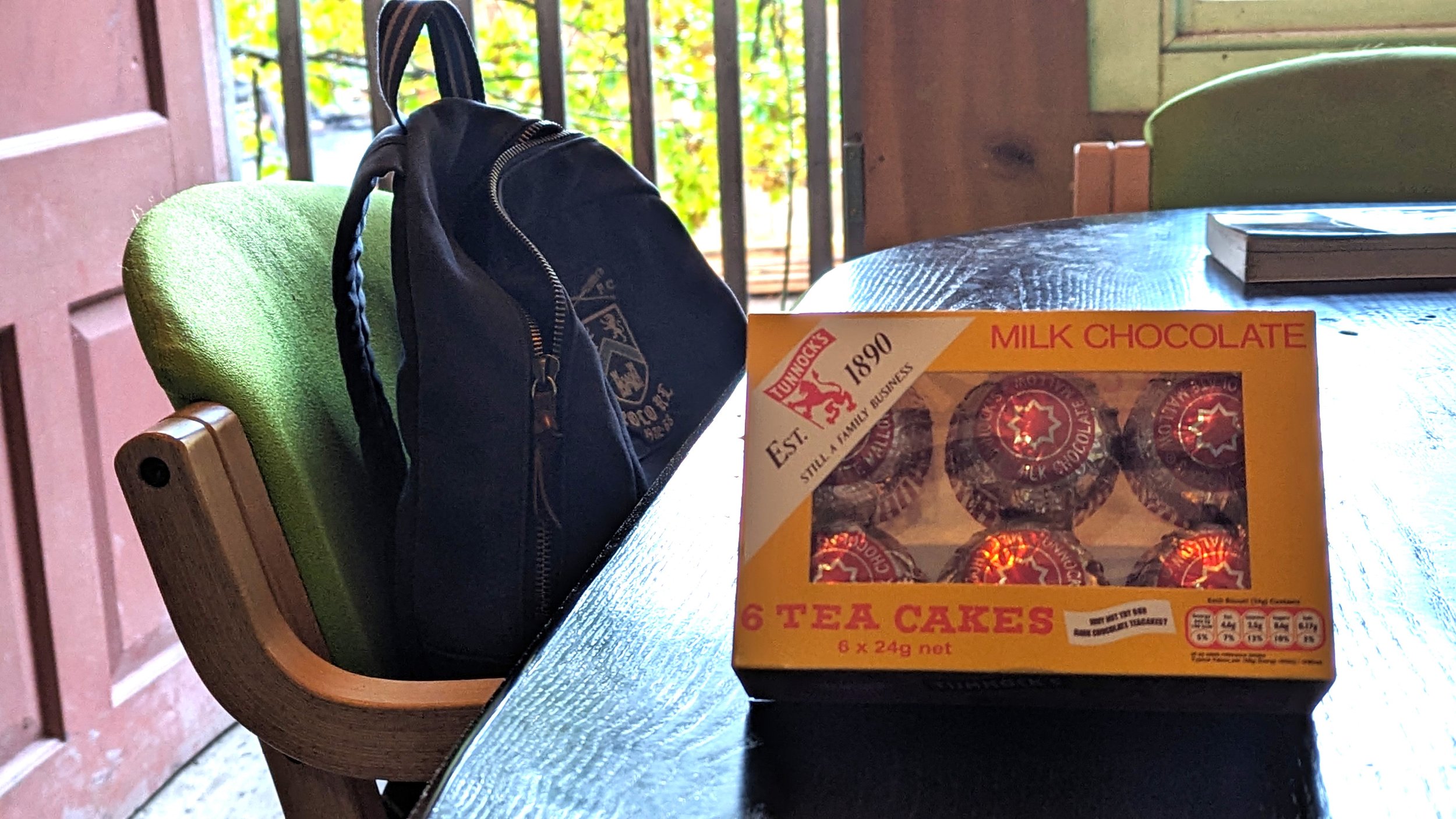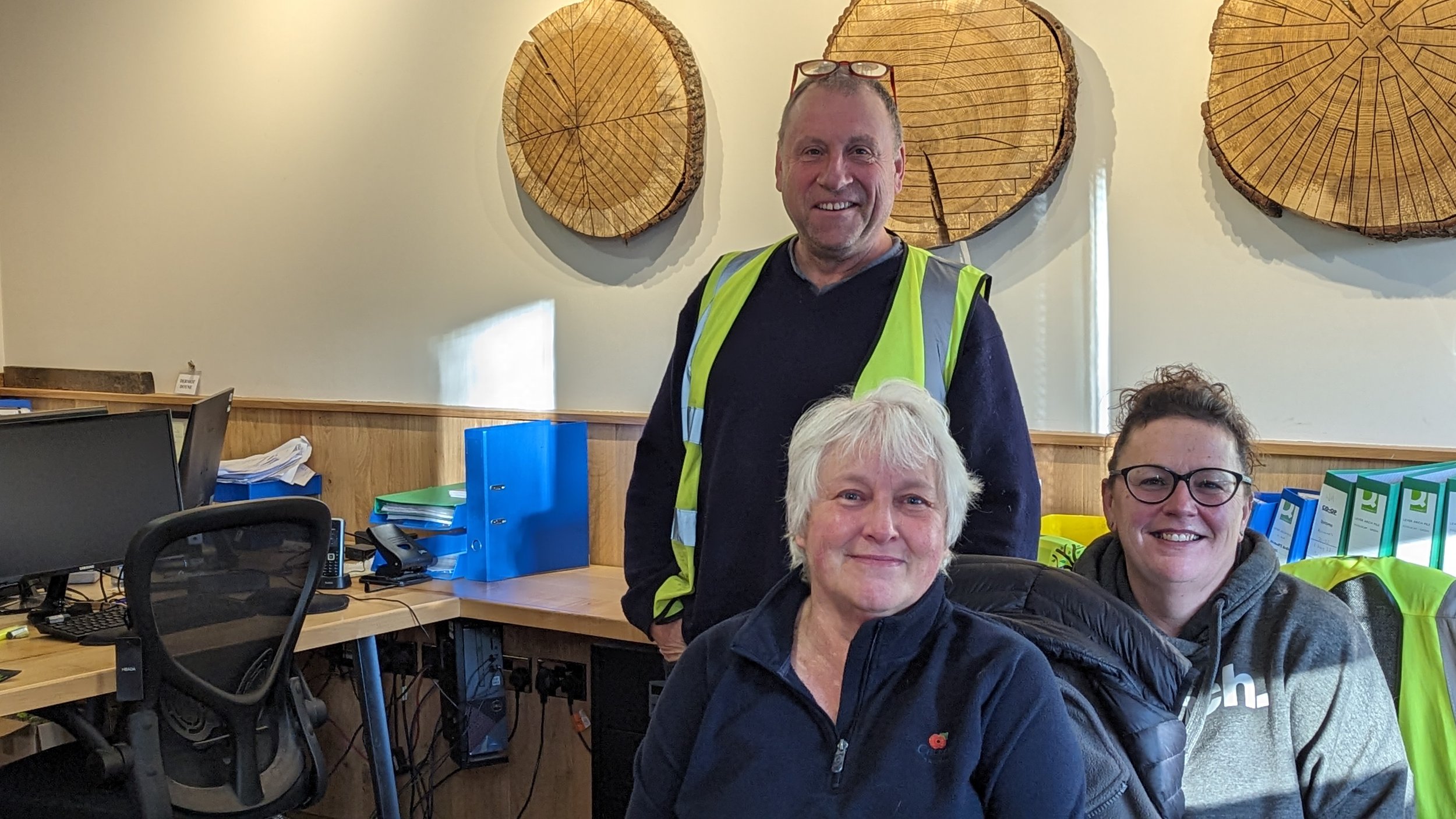A behind the scenes look at Whitney Sawmills, based in Herefordshire. This hardwood mill is a key part of our domestic timber supply. Read on for tea cakes and timber framing, to matches and Mebor saws.
The day starts with getting things ready for the drive over the Malvern Hills. Some coasters from the recent Field Day need to make the trip to the charity office at Whitney Sawmills, so in the bag they go.
They’re made from Sweet Chestnut, which was one of the first parcels Head Forester Nina Williams, of Cowdray Park worked on. She was really glad to hand some of these to her fantastic team.
You can read about the Field Day in the next issue of Wood Culture: The Journal of Woodland Heritage by becoming a member.
After dropping off some high tier snacks, I caught up with Dan, who talked me through the day ahead. The focus, today, was very much on Oak. There is an order in for structural beams and other timbers for a timber framing company.
It’s wonderful to think that these beautiful, strong timbers will be the vital skeleton of a home for, hopefully, hundreds of years.
As Dan and me talk, I can hear the buzz-grind of saw blades being sharpened.
Dan also let me know that there are some fencing components coming from the timber being milled today. For him and Richard, it’s about efficient use of time, energy and of course getting as much usable material from this precious resource as possible. Waste is the enemy.
Before the logs reach Dan though, Alan has to work his magic. He’s selecting QPA and QP1, markers of quality, prospect logs from the log yard. One half of these will head to the forester saw. It’s older technology, but can cut slightly longer spans of timber.
And when you are making buildings, sometimes there is no substitute for timber long enough to span what’s needed, no matter how good your scarf, or offset mortice and tenon joints might be.
The other half of the logs will wing their way to the ‘lime green milling machine’ (the Mebor saw, if you’re being serious) where Dan will cut the logs to the exact specifications of the order. Whilst this is happening Alan begins to gear up for the requirements of next week.
Alan took the time to show me some huge Poplar logs which arrived at Whitney Sawmills a few days earlier. Once these would have been destined to be made into match sticks. But the popularity of petrol or kerosene lighters put that to bed. So goes the challenge of predicting demand over the lifetime of a tree.
Instead, these will be made into bearers for the drying shed. Poplar has forgiving fibres which make it ideal for stacking other boards, allowing the air to flow and the moisture levels in the boards to get closer to the moisture levels of its surroundings, ready for working into furniture and other treasured objects.
Later on in the day, it’s ‘all go’ in the Whitney Sawmills office, so it was kind of Dermot, Melissa and Heidi to pause for a picture. There’s a buzz caused by customers dropping by to pick up orders they placed earlier in the week, delivery lorries leaving the yard and new orders coming in via email pings, mobile dings and phone rings. It’s a relatively dry and sunny day with sunlight streaming into this beautiful building.
At the far end of Whitney Sawmills the dry timber sheds are watched over by Richard’s dog Harrie.
Everyone’s glad of Harrie’s watchful gaze, as these timbers won’t dry themselves...
Harrie, the helpful hound happily hangs around.
Author: John Orchard
Last updated: 21/11/23
If you’re a member of Woodland Heritage with a story to share, we’d love to hear from you!











